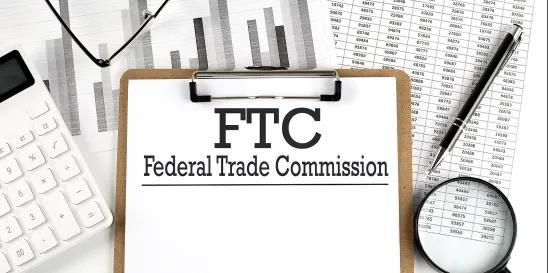The Federal Trade Commission (“FTC”) has increased the dollar jurisdictional thresholds necessary to trigger the reporting requirements of the Hart-Scott-Rodino Antitrust Improvements Act of 1976, as amended (“HSR Act”), and the dollar value of each of the six filing fee thresholds; the revised thresholds will become effective 30 days after the date of publication in the Federal Register. The daily maximum civil penalty for being in violation of the HSR Act has increased, and is, as of January 10, 2024, $51,744.
The FTC also increased the thresholds for interlocking directorates under Section 8 of the Clayton Act; these revised thresholds are in effect as of January 22, 2024.
Revised HSR Thresholds
Under the HSR Act, parties involved in proposed mergers, acquisitions of voting securities, unincorporated interests or assets, or other business combinations (e.g., joint ventures, exclusive license deals) that meet certain thresholds must report the proposed transaction to the FTC and the Antitrust Division of the U.S. Department of Justice (“DOJ”) unless an exemption applies. The parties to a proposed transaction that requires notification under the HSR Act must observe a statutorily prescribed waiting period (generally 30 days) before closing. Under the revised thresholds, transactions valued at $119.5 million or less are not reportable under the HSR Act.
A transaction closing on or after the date the revised thresholds become effective may be reportable if it meets the following revised criteria:
| Size-of-Transaction Test |
The acquiring person will hold, as a result of the transaction, an aggregate total amount of voting securities, unincorporated interests, or assets of the acquired person valued in excess of $478 million; or The acquiring person will hold, as a result of the transaction, an aggregate total amount of voting securities, unincorporated interests, or assets of the acquired person valued in excess of $119.5 million but not more than $478 million, and the Size-of-Person thresholds below are met. |
| Size-of-Person Test |
One party (including the party’s ultimate parent entity and its controlled subsidiaries) has at least $239 million in total assets or annual sales, and the other has at least $23.9 million in total assets or annual sales. |
The full list of the revised thresholds is as follows:
| Original Threshold | 2023 Threshold | 2024 Revised Threshold |
| $10 million | $22.3 million | $23.9 million |
| $50 million | $111.4 million | $119.5 million |
| $100 million | $222.7 million | $239 million |
| $110 million | $245 million | $262.9 million |
| $200 million | $445.5 million | $478 million |
| $500 million | $1,113.7 million | $1,195 million |
| $1 billion | $2,227.4 million | $2,390 million |
The filing fees for reportable transactions and the six filing fee tiers also have been updated, as follows:
| Filing Fee | Size of Transaction under the Act |
| $30,000 | For transactions valued in excess of $119.5 million but less than $173.3 million |
| $105,000 | For transactions valued at $173.3 million or greater but less than $536.5 million |
| $260,000 | For transactions valued at $536.5 million or greater but less than $1,073 million |
| $415,000 | For transactions valued at $1,073 million or greater but less than $2,146 million |
| $830,000 | For transactions valued at $2,146 million or greater but less than $5,365 million |
| $2.335 million | For transactions valued at $5,365 million or more |
The filing fee tiers, introduced in 2023, are adjusted annually to reflect changes in the GNP for the previous year.
The HSR Act’s dollar thresholds are only part of the analysis to determine whether a particular transaction must be reported to the FTC and DOJ; a full analysis requires consideration of exemptions to the filing requirements that may be available to an acquiror. Failure to notify the FTC and DOJ under the HSR Act remains subject to a statutory penalty of up to $51,744 per day of noncompliance.
Revised Thresholds for Interlocking Directorates
Section 8 of the Clayton Act prohibits one person from simultaneously serving as an officer or director of two corporations if: (1) each of the “interlocked” corporations has combined capital, surplus, and undivided profits of more than $48,559,000 (up from $45,257,000); (2) each corporation is engaged in whole or in part in commerce; and (3) the corporations are “by virtue of their business and location of operation, competitors, so that the elimination of competition by agreement between them would constitute a violation of any of the antitrust laws.”1
Section 8 provides several exemptions from the prohibition on interlocks for arrangements where the competitive overlaps “are too small to have competitive significance in the vast majority of situations.”2 A corporate interlock does not violate the statute if (1) the competitive sales of either corporation are less than $4,855,900 (up from $4,525,700); (2) the competitive sales of either corporation are less than 2 percent of that corporation’s total sales; or (3) the competitive sales of each corporation are less than 4 percent of that corporation’s total sales. The DOJ has been active recently in identifying and achieving remediation of interlocks that may violate Section 8.3
1 15 U.S.C. § 19(a)(1)(B).
2 S. Rep. No. 101-286, at 5-6 (1990), reprinted in 1990 U.S.C.C.A.N. 4100, 4103-04.
3 Department of Justice, Two Pinterest Directors Resign from Nextdoor Board of Directors in Response to Justice Department’s Ongoing Enforcement Efforts Against Interlocking Directorates (Aug. 16, 2023); Department of Justice, Justice Department’s Ongoing Section 8 Enforcement Prevents More Potentially Illegal Interlocking Directorates (Mar. 9, 2023); Department of Justice, Directors Resign from the Boards of Five Companies in Response to Justice Department Concerns about Potentially Illegal Interlocking Directorates (Oct. 19, 2022).





 />i
/>i

